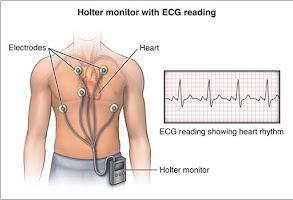A Holter monitor is a tiny, portable gadget that monitors your heart rate. You may be asked to wear a Holter Monitor Test in Kalyan for one to two days by your doctor. The gadget captures all of your heartbeats throughout that period.
Why
it's done
If you experience
signs and symptoms of an abnormal cardiac rhythm (arrhythmia) or unexplained
fainting, your doctor may prescribe that you wear a Holter monitor for a day or
two.
You'll get an electrocardiogram before getting a Holter monitor (ECG). An ECG is a rapid and painless test that checks your heart's rhythm using sensors (electrodes) attached to your chest.
However, because you're only linked up to the equipment for a brief period, an ECG may miss any changes in your cardiac rhythm. An ECG may overlook aberrant cardiac rhythms, but a Holter monitor may be able to detect them.
If you have a cardiac ailment that puts you at risk for an irregular heart rhythm, a Holter Monitor Test in Kalyan may be recommended.
Other than occasional discomfort or skin irritation where the electrodes were inserted, there are no substantial hazards associated with using a Holter monitor.
The Holter monitor, on the other hand, must not be exposed to water or it will be destroyed. If you're using a Holter monitor, don't swim or bathe while it's on. You'll be shown how to detach and reconnect the senso if you have a wireless Holter monitor.
Other electrical appliances generally have little effect on holter monitors. However, some gadgets can cause the transmission from the electrodes to the Holter monitor to be interrupted. If you have a Holter monitor, you should use it.





No comments:
Post a Comment